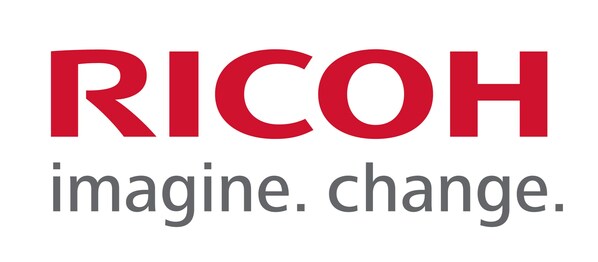BEIJING, Sept. 27, 2023 /PRNewswire/ -- Among the hustle and bustle of the container field at the Csepel Port Logistics Park in Budapest, the capital of Hungary, cranes busily lift and transfer containers onto trains bound for other parts of Europe. One can't help but notice the prominent presence of Chinese shipping brands, a testament to the robust business connectivity between this Hungarian park and Chinese ports thousands of miles away.
From a barren expanse to its current sprawling 140,000-square-meter facility, the Csepel Port Logistics Park, invested and developed by a Chinese company, has emerged as a pivotal player in the Central European Trade and Logistics Cooperation Zone (CECZ) over the decade. As a key component of the China-proposed Belt and Road Initiative (BRI), the park not only showcases Chinese products but also serves as a vital nexus for logistics enterprises.
Over the last decade, the logistics park has collaborated with numerous domestic rail platform operators, resulting in the launch of more than 180 China-Europe freight train services.
These routes, including the pioneering China-Europe Land-Sea Express (Haihong Express) and routes like Jinan to Budapest and Urumqi to Budapest, have significantly bolstered Hungary's position as a leading transportation hub in Central and Eastern Europe.
This achievement proved crucial during challenging times, such as the COVID-19 pandemic, as it ensured the stability of supply and industry chain connectivity between the East and West.
From rail to chain
Hitchhiking on the joint construction of the BRI, the logistics park's business has expanded since it was established in 2012, from building up rail services from scratch to the expansion of the complete supply and industry chain in what it stands as the core transportation hub in the region.
Few have witnessed this profound transformation quite like Keiko Tien, cross-border e-commerce logistics department manager of the Central European Trade and Logistics Cooperation Zone.
She still remembers the day when the Changsha-Budapest China-Europe train, operated by the logistics park, transported 41 containers with Chinese goods from Russia through Ukraine to Budapest, on June 16, 2017, officially inaugurating the European southern route for China-Europe freight trains.
"In the domain of China-Europe freight train routes, we marked a breakthrough by opening up a new corridor in Europe," Tien told the Global Times.
Although this route was temporarily interrupted following the start of the ongoing Russia-Ukraine conflict in February 2022, its initial opening mitigated the risk of relying solely on one channel for China-Europe trains to enter Europe, opening up new possibilities for future train routes, Tien said.
In the years since, the park has partnered with various domestic rail platforms.
So far, more than 180 China-Europe trains have been launched via the logistics park connecting multiple domestic node cities in China to Budapest and other parts of Europe.
"As more trade has flowed in, we have become a multifaceted interactive platform for Chinese and European enterprises, integrating business display and trade, transportation logistics and warehousing, and industrial investment and cooperation," Tien said.
Moreover, over the last decade, the park has driven and stimulated direct and indirect Chinese exports worth $7.6 billion to Hungary, with products ranging from mechanical and electrical components to textiles, and home furnishings.
In addition to trains, the logistics park has contributed to stabilizing the supply chain through expanding transportation services such as scheduled cargo charter flights.
In the pursuit of a diversified and stable supply chain, the park has provided strong support to numerous Chinese companies, including the new energy vehicle producer BYD, as they invest in Hungary and Europe. This assistance has facilitated the establishment of robust international supply chain routes for these companies in going to the West, as Tien said.
Tien's remarks are not without merit. Hungary is now one of China's most important trading partners in Central and Eastern Europe, with a bilateral trade volume worth $15.52 billion in 2022, an increase of 84 percent from 2013.
Since 2019, the average annual growth rate of bilateral trade between China and Hungary has reached 15 percent, far surpassing that of other EU countries.
The great changes that Chinese investment has brought to the country are beyond trade and investment, as Patyi Kristóf, head of business development of the cooperation zone, told the Global Times.
"China is one of the largest investors and a major trading partner for Hungary. This means Chinese companies are providing jobs for local people, and besides the economy, there are strong partnerships in culture and educational exchanges as well," said Kristóf.
Personally, because of this job, Kristóf has the opportunity to travel to many places and familiarize himself with many different cultures. "These opportunities have allowed me to gain a deeper understanding of the importance and significance of China-Hungary economic and trade relations under the BRI," he said.
The logistics park has not only acted as a bridge for Chinese companies expanding their businesses in Europe but has also facilitated Hungarian companies' entry into China. In 2014, Hungary's Ghibli, a local logistics supply chain company, established its presence in the logistics park.
Based on the advanced supply chain network within the park, Ghibli has experienced significant business expansion, as evidenced by the company's industry ranking. It has risen from 11th place at the time it started operations at the park to its current 3rd place position. Moreover, the company's workforce has doubled during this period.
Resilience and growth
The park's resilience is best exemplified by its unwavering strength and expansion amid the challenges posed by the COVID-19 pandemic.
After accepting the urgent task of purchasing and transporting epidemic prevention materials for the Hungarian government, the logistics park mobilized resources from all parties, quickly organized procurement, and chartered flights among other proactive measures. In just 7 days, they completed the purchase, consolidation, chartering, customs clearance, and shipment of the first batch of 70 tons of epidemic prevention materials. When the charter flight transporting the first batch of epidemic prevention and control materials arrived in Budapest, Hungarian Prime Minister Viktor Orbán personally welcomed it at the airport.
In addition, during the pandemic, the logistics park leveraged its advantages in the supply chain by providing equipment and material procurement, transportation, factory construction, equipment installation, and production support for the construction of mask and glove production facilities for the Hungarian government.
In recognition of the logistics park's outstanding performance in epidemic prevention and control, the Hungarian government awarded the park the Knight's Cross, one of the country's highest orders of merit.
The achievements do not stop here. Looking ahead, the overarching goal of the logistics park is to move toward green development and the digital economy, which include investing around 70 million euros ($74.86 million) in developing an e-commerce logistics park project, which will include a 30,000-square-meter smart warehouse.
Upon completion, this new project will be the first fully digitized and intelligent warehouse in the Central and Eastern European region tailored specifically for e-commerce companies, according to Tien. Intelligent robots will also be adopted in the park in future operations to facilitate the efficiency and cut costs.
Once the park is completed, it will serve as a training hub for warehousing talent in Hungary. Currently, the project's main construction has reached its pinnacle, with plans for it to commence operations in 2024.











